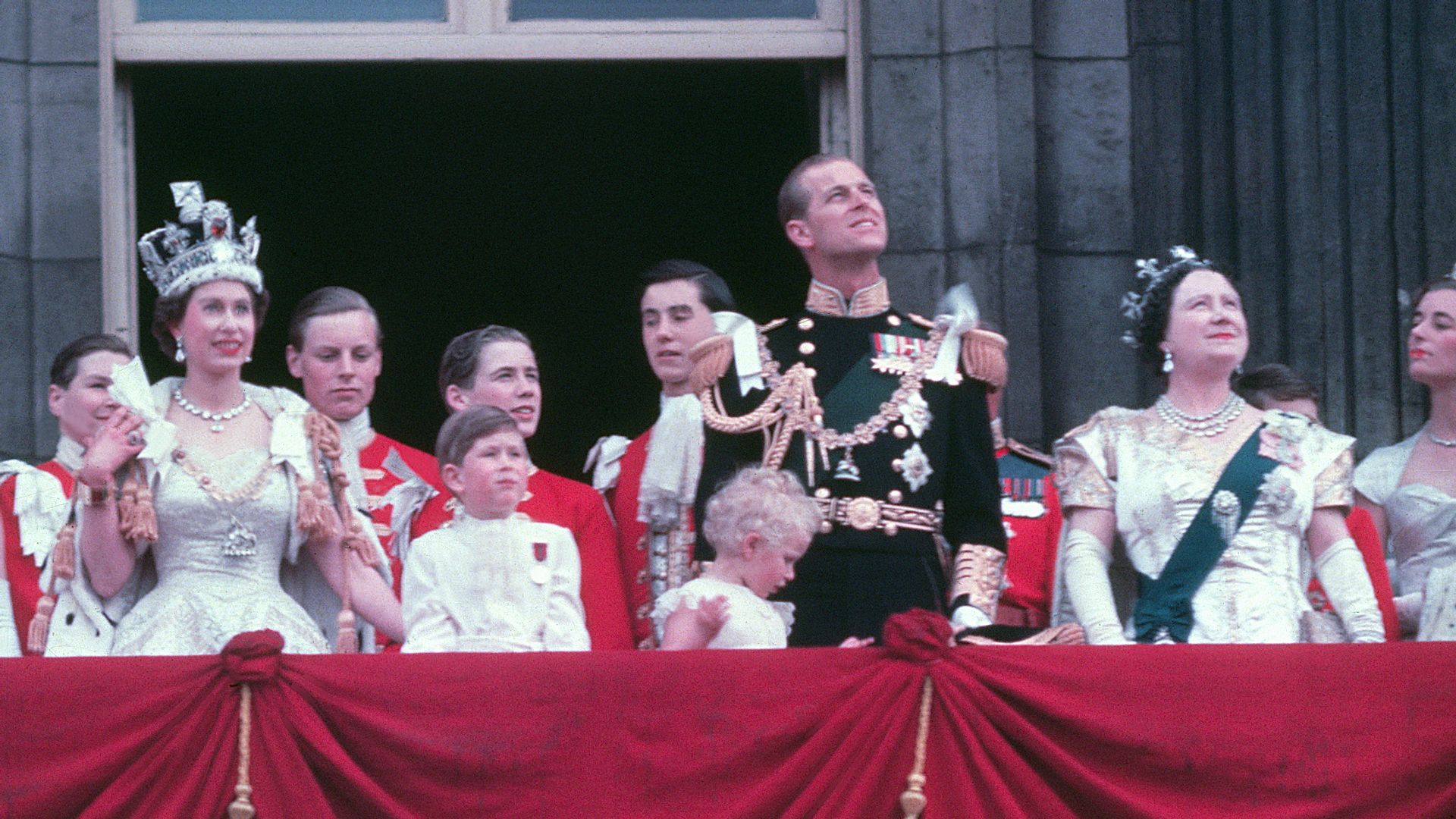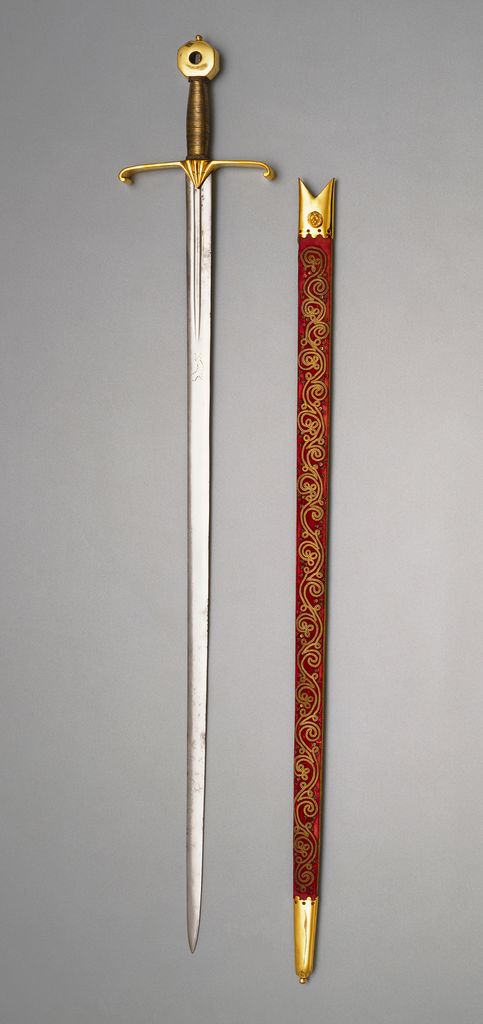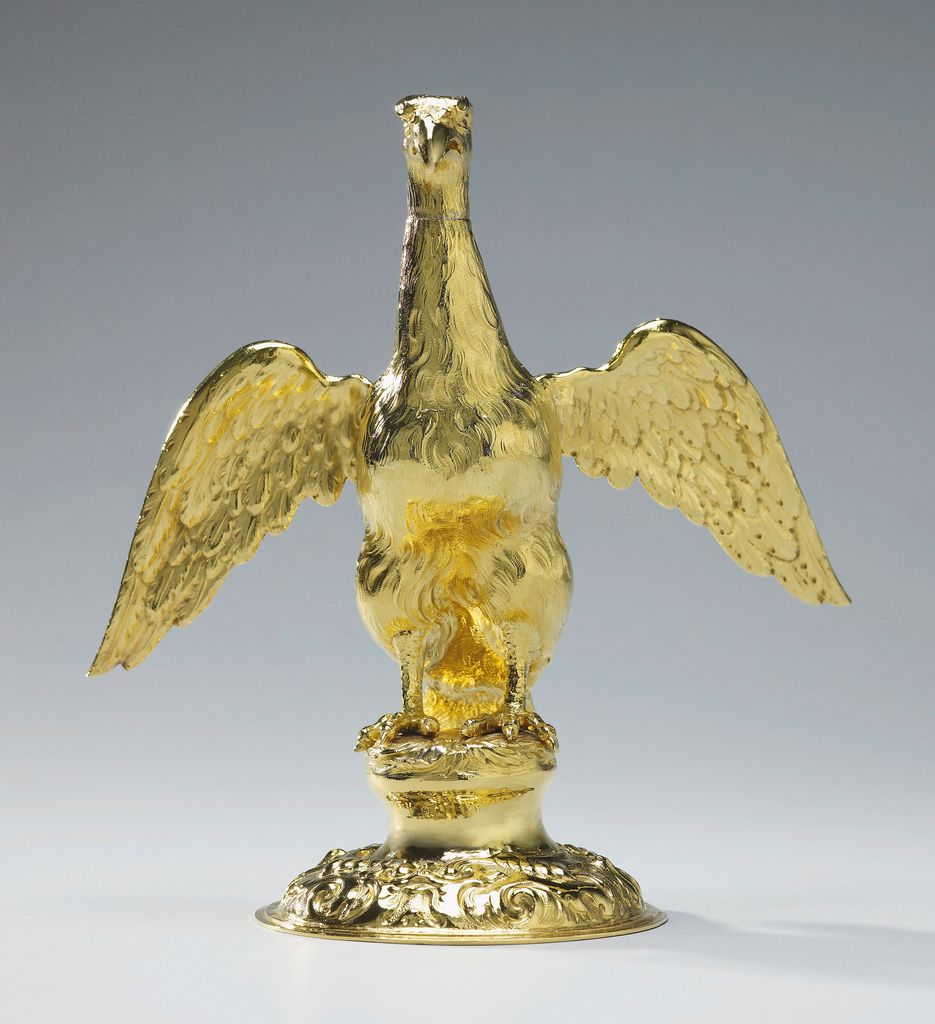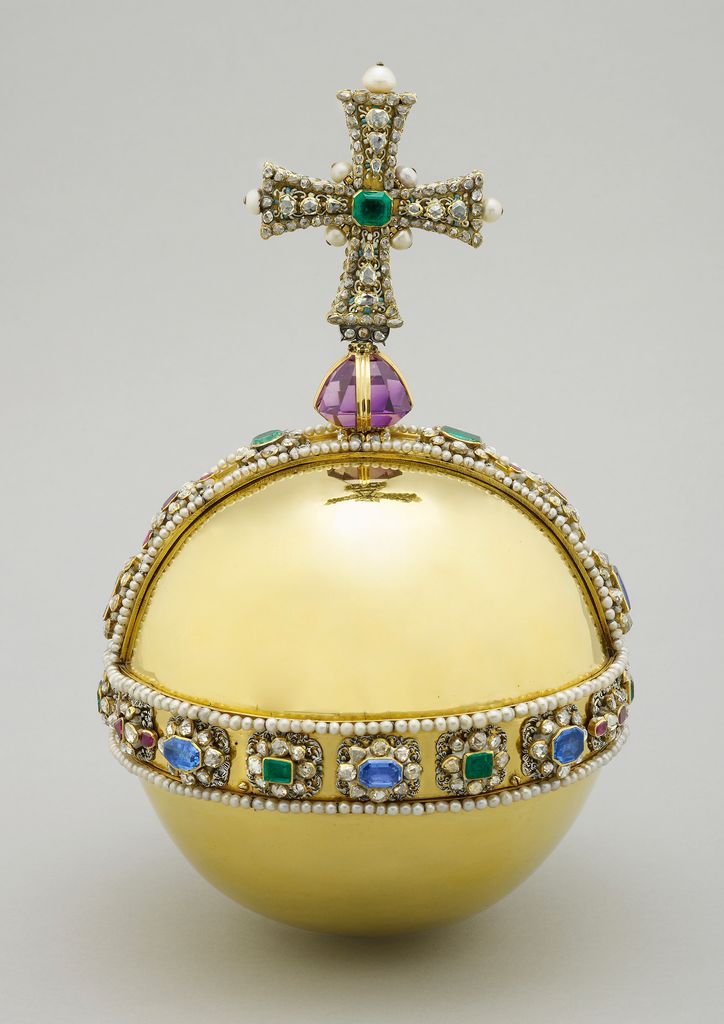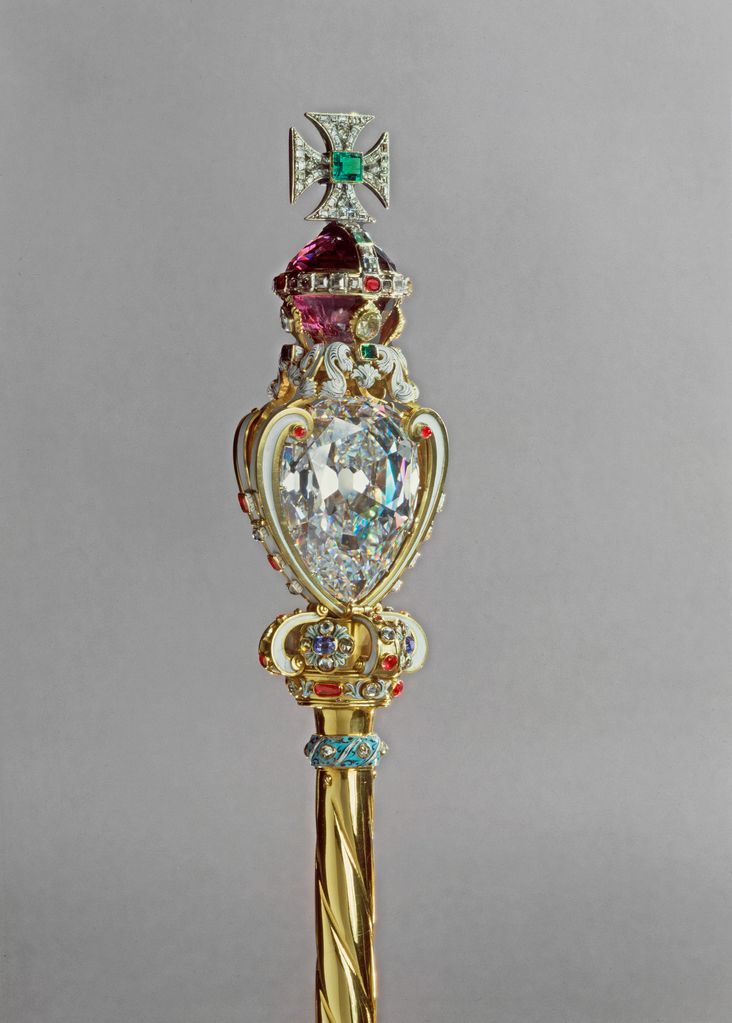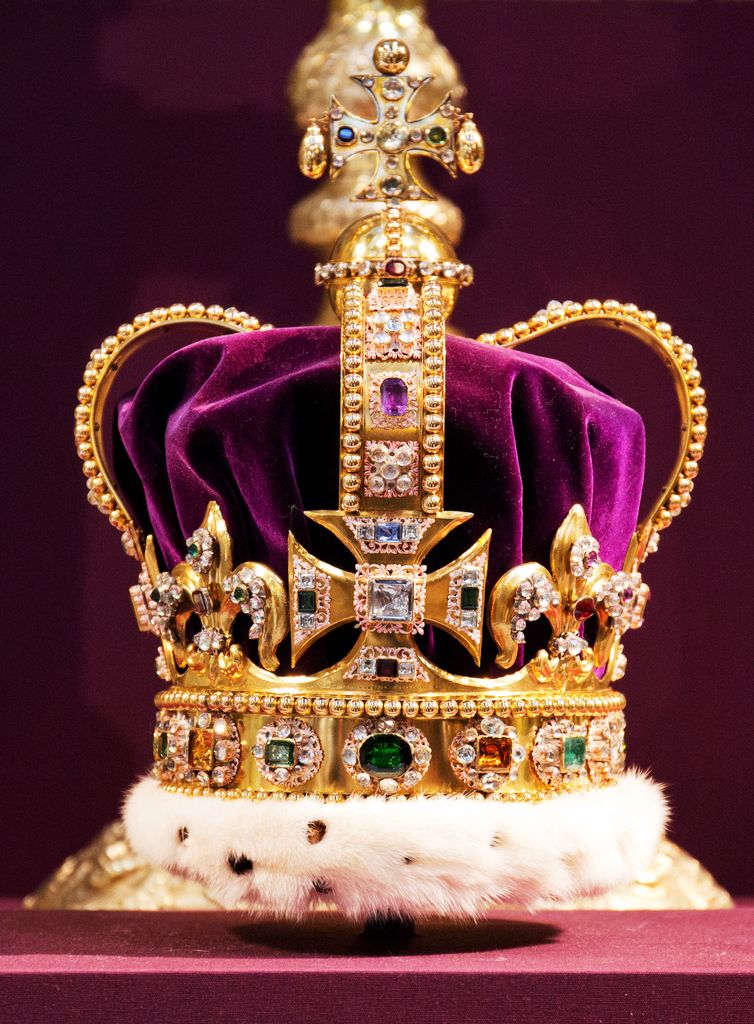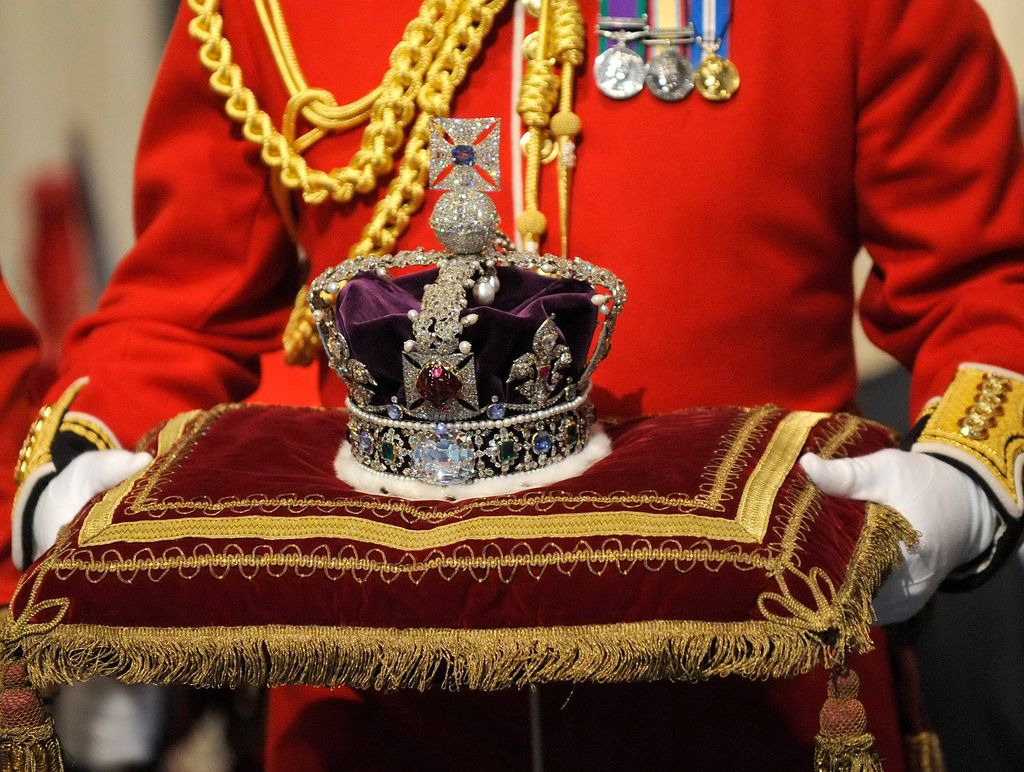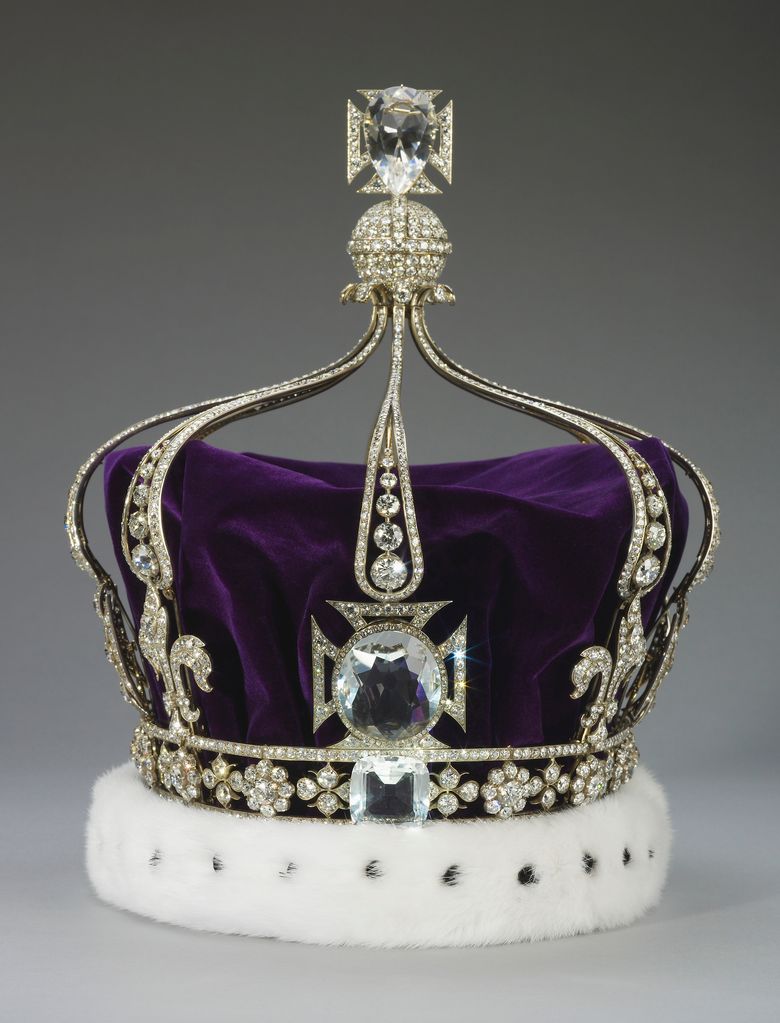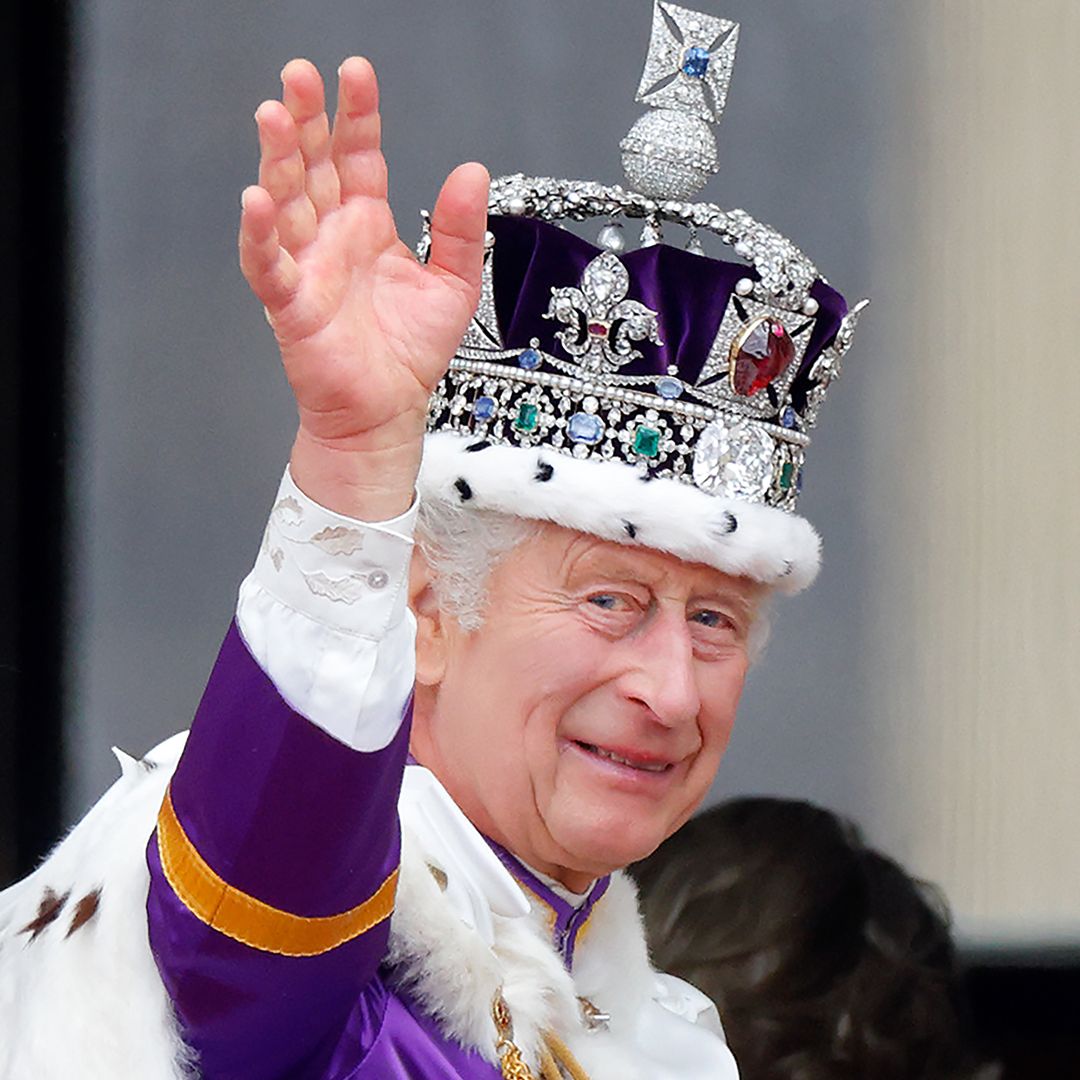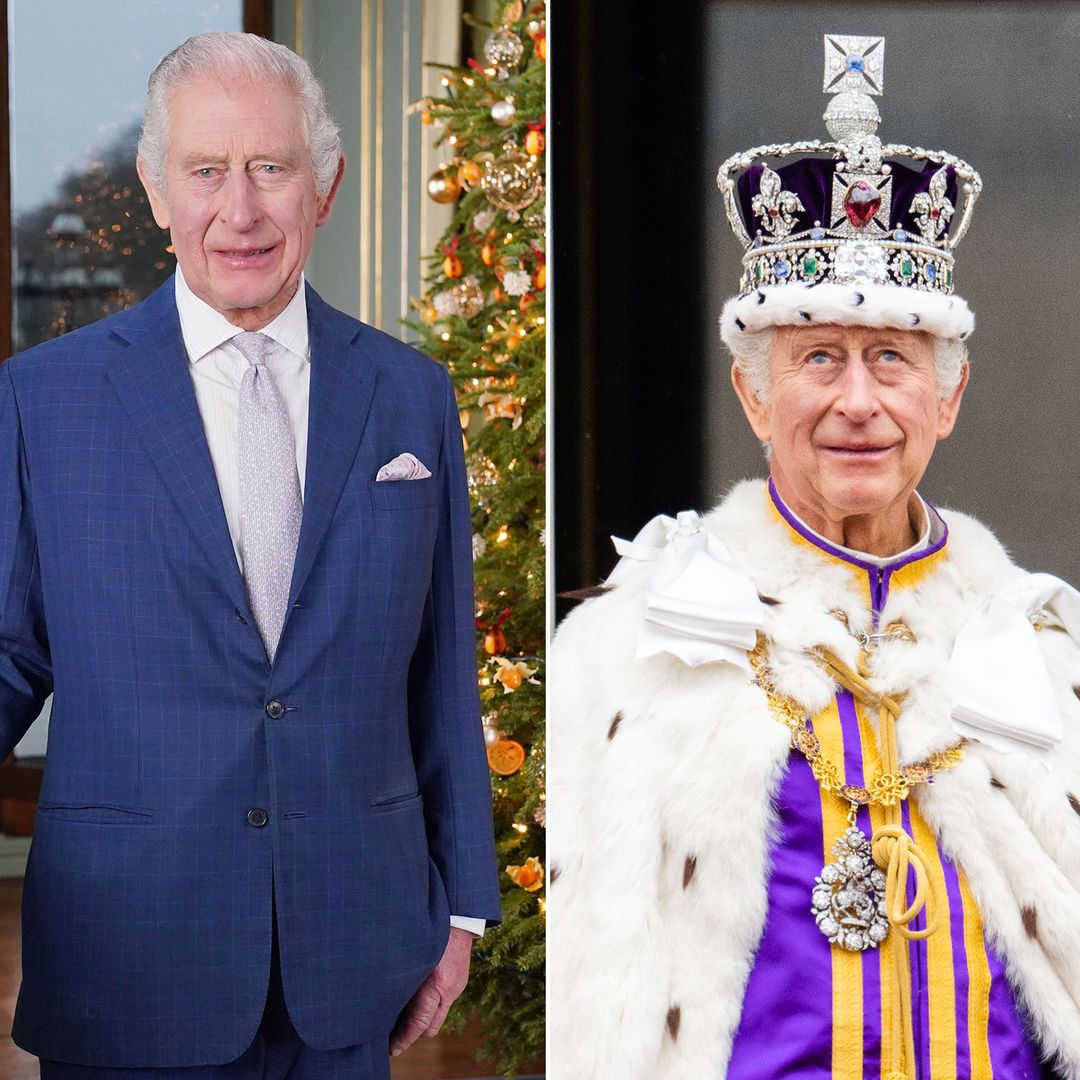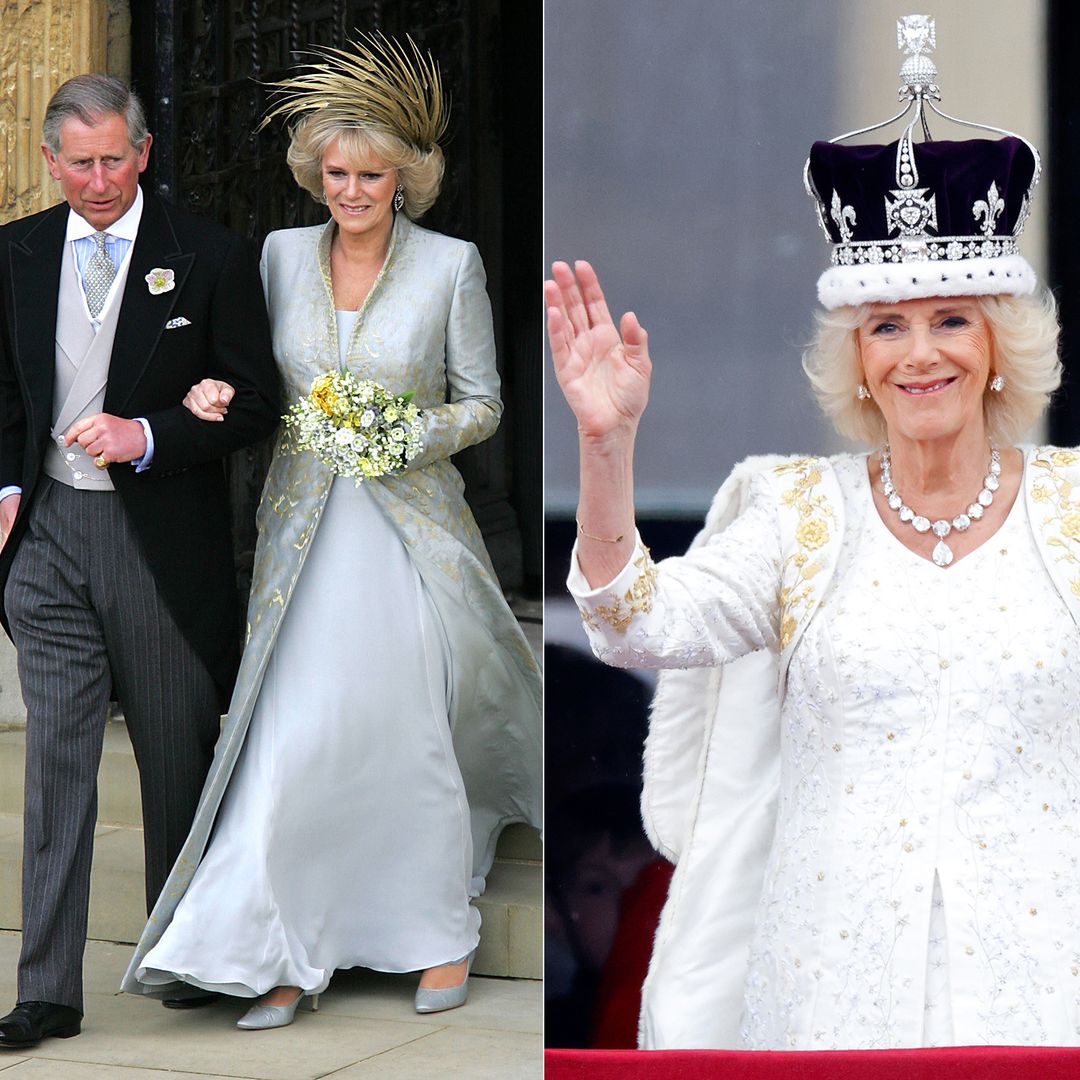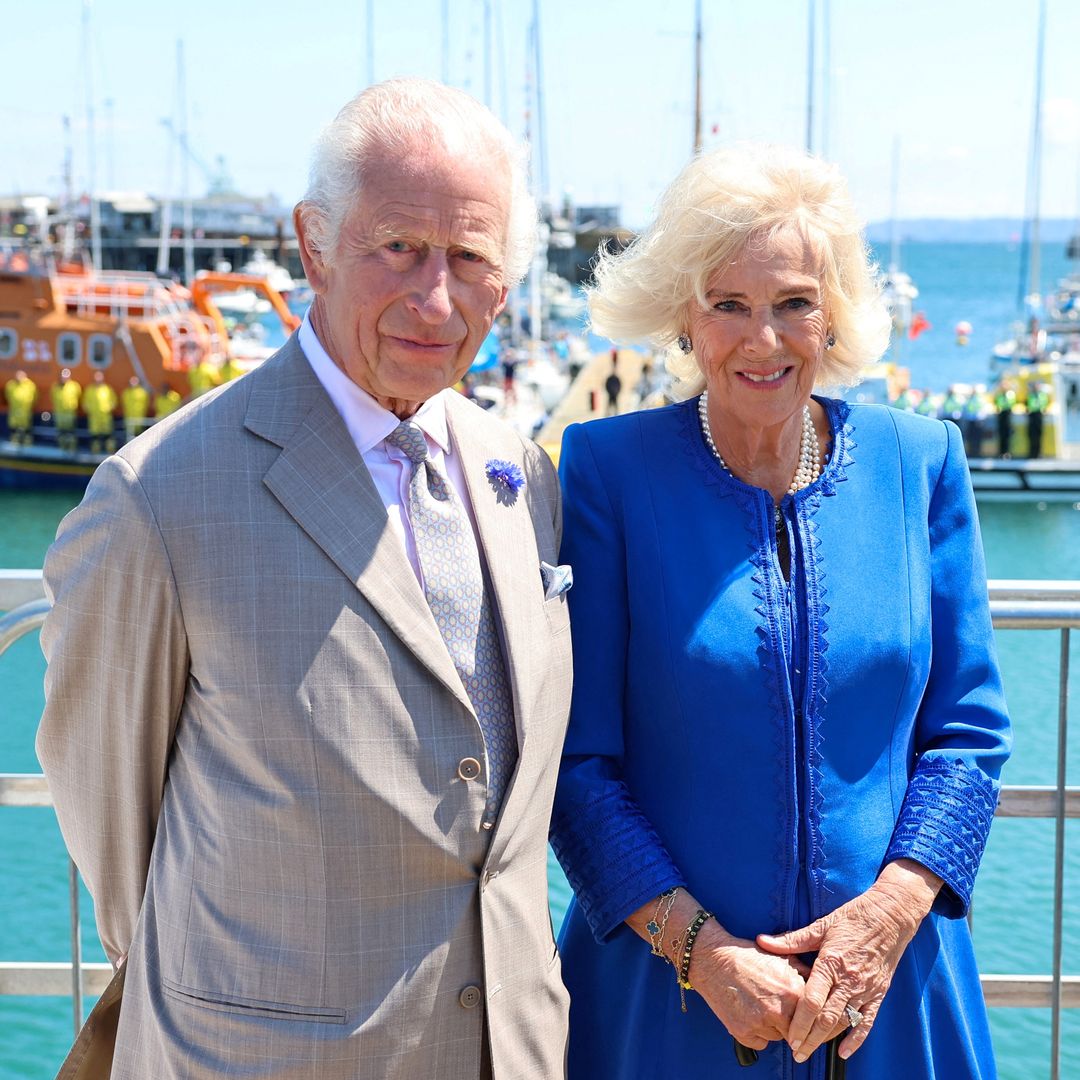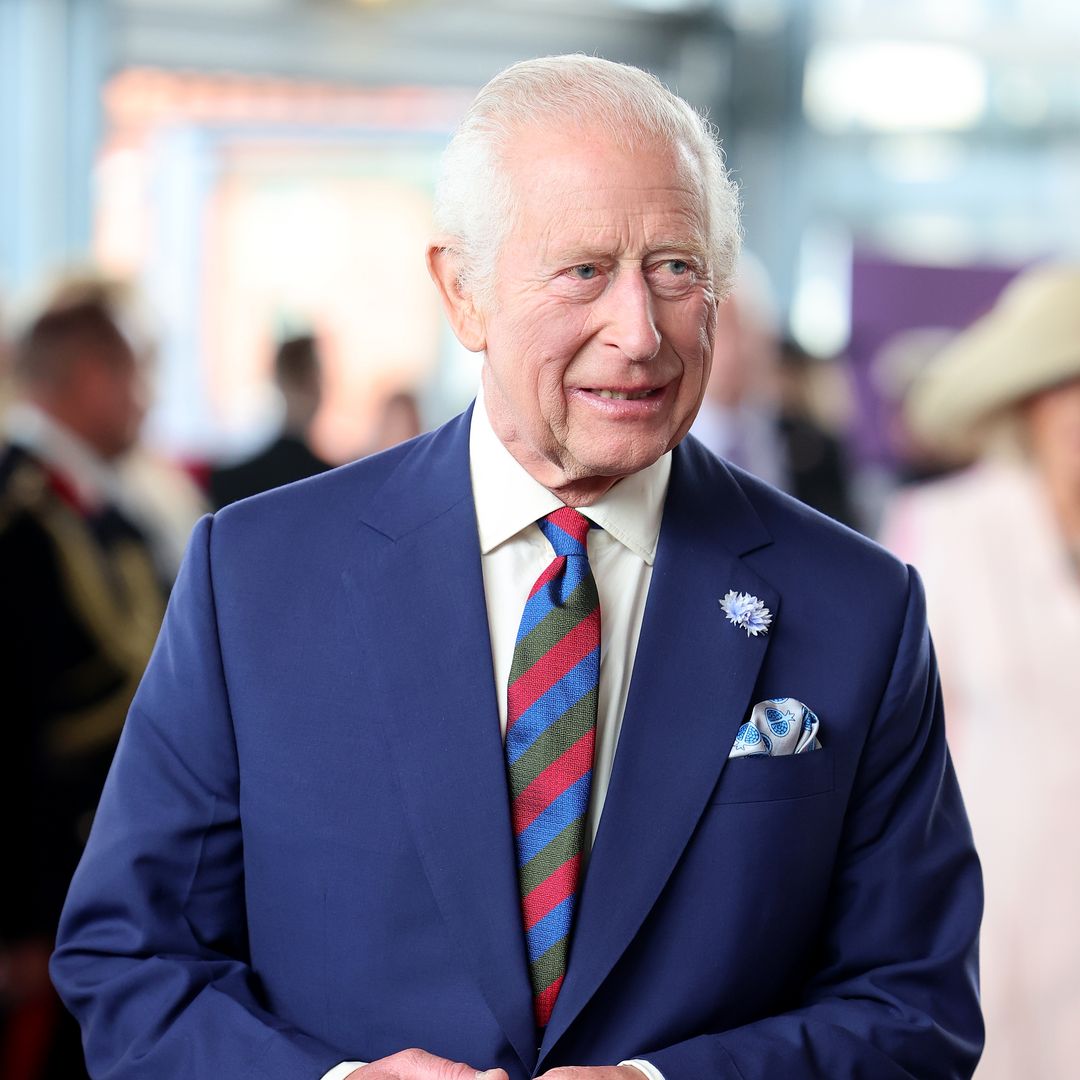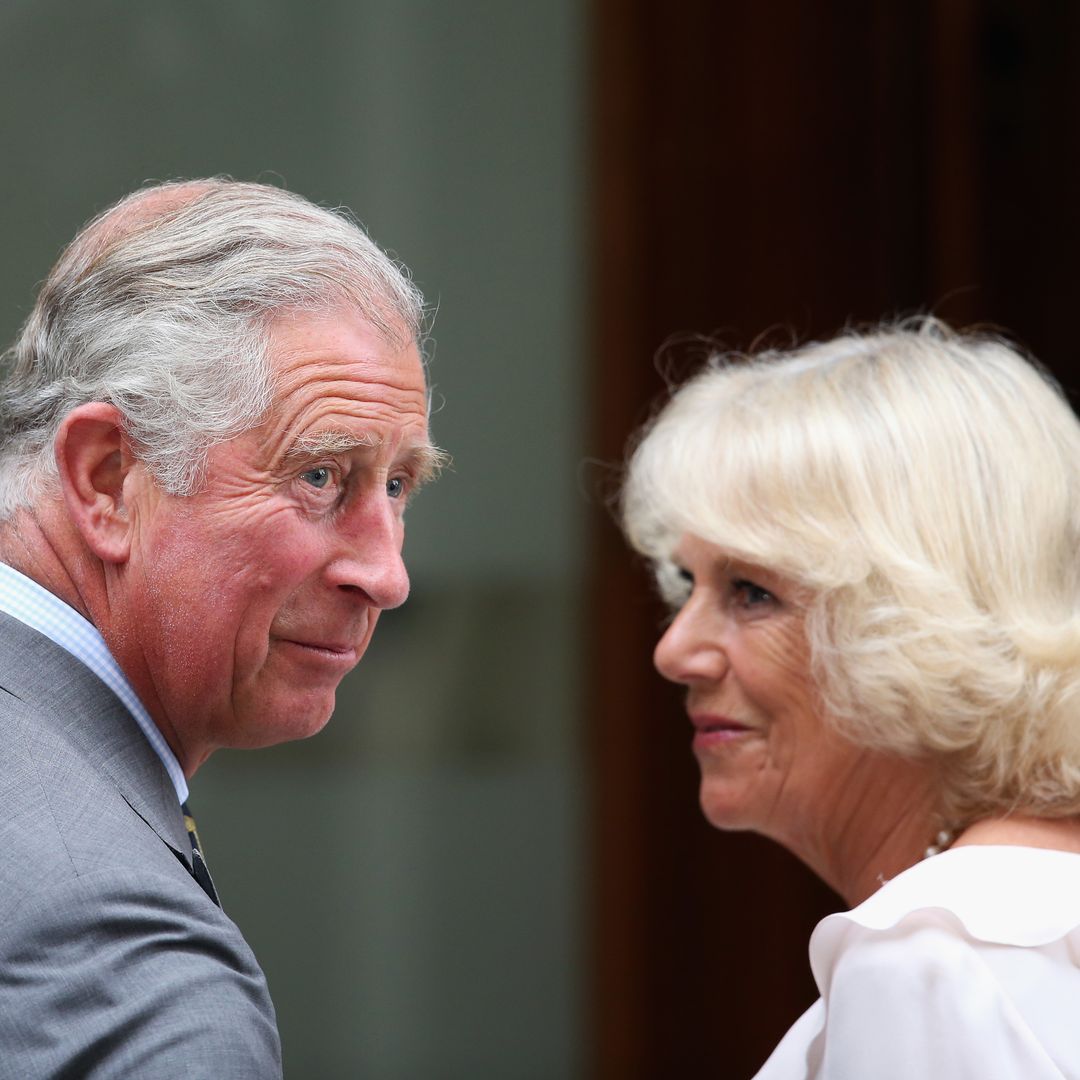They are the priceless and historic items that have been used in coronation ceremonies since medieval times and they make up the magnificent collection of Crown Jewels housed at the Tower of London. But on 6 May, the crown jewels once again took centre stage at Westminster Abbey as they were used for the crowning of King Charles III and his Queen Consort Camilla at Westminster Abbey.
While most of these extraordinary and dazzling pieces of regalia are based on items and traditions dating back to the 10th Century, all but one of the original medieval items were destroyed by the government in 1649, following the execution of King Charles I. But under his son King Charles II, dazzling new regalia was created in 1661 that is still in use to this day. Take a look back at the late Queen Elizabeth II'S 1953 coronation in the clip below...
Now, join HELLO! as we examine the history, symbolism and significance of these precious objects, which are held in trust by the monarch for the nation, in the order in which they will appear during the forthcoming coronation.
What crown jewels featured in King Charles' coronation?
Ceremonial mace
Used in royal processions to symbolise royal authority, they also have ceremonial uses such as at the State Opening of Parliament each year. They were based on club-like weapons often used by bishops in the early medieval period and by Serjeants at Arms – a type of royal bodyguard.
St Edward's Staff
Based on an object carried in medieval coronation processions, this was recreated when the Crown Jewels were remade in 1660 and 1661 for Charles II.
Charles Farris, public historian at Historic Royal Palaces, tells HELLO!: "When it came to St Edward's Staff, no one was quite sure what it was for and they almost didn't have one at all, but Charles II said, 'No, I want the full set'. And it was made, even though no one quite knew what it was for and that is still carried in English coronations today."
The swords
The tradition of carrying three swords pointed upwards, each representing a kingly virtue, dates back to the coronation of Richard the Lionheart in 1189. The current Sword of Spiritual Justice, the Sword of Temporal Justice and the Sword of Mercy – also known as The Curtana – with a symbolically blunted end, were made for the coronation of Charles I in 1626 and are among very few items of regalia to have survived the Civil War.
SEE: All the historical items King Charles has banned from coronation revealed
There is also the Sword of State, which was made for Charles II around 1678. It has been used for ceremonial occasions since his reign, including by the late Queen at the investiture of the Prince of Wales in 1969.
The Anointing
Ampulla
This extraordinary item is used during the most solemn part of the coronation ceremony, when the Archbishop of Canterbury anoints the King with holy oil. The eagle-shaped ampulla was made in 1661 from gold supplied by the Royal Goldsmith Robert Vyner and has a small aperture in the "beak" which is used for pouring the oil into the Coronation Spoon. The eagle's head can be unscrewed to fill it with oil.
The design, is based on an earlier, smaller vessel, which in turn was based on a 14th Century legend that the Virgin Mary appeared to St Thomas a Becket and presented him with a golden eagle and a vial of oil for anointing future kings of England.
Coronation spoon
Kathryn Jones, Senior curator of decorative arts at the Royal Collection Trust, tells HELLO!: "Although it is perhaps the most humble object in the collection, it’s actually the oldest. This dates back to the 12th century, and it's the one real great survivor of the medieval day. It was listed among the regalia in 1349. But stylistically it dates earlier than that and may have been supplied to either Henry II or Richard I.
"The oil is poured into the bowl of the spoon, and then the Archbishop will dip his two fingers into it to anoint the sovereign on the hands, breast and head."
The silver-gilt spoon, which has a divided oval bowl, is decorated with four pearls which were added for Charles II in 1661. The spoon survived the destruction of the Crown Jewels after it was sold to Clement Kynnersley, Yeoman of Charles I’s Wardrobe, who later returned it to Charles II.
The investiture
After being robed, the monarch is given symbolic ornaments associated with royalty, which represent his powers and responsibilities. The practice dates back to Anglo Saxon coronations, when services were held in Latin. The presentation of symbolic items helped those in the congregation to understand what was happening.
Spurs
Gold Spurs featuring Tudor roses represent knighthood and this pair was made in 1661 for Charles II. Spurs have been coronation ornaments since the coronation of Richard I (The Lionheart). They were traditionally fastened to the monarch’s feet, but since the Restoration, they have been held to the ankles of the King or Queen and then placed on the altar.
Charles says: "These are very much symbolic of the close association between the coronation ceremony of investiture of the new monarch with the investiture and making of new knights. Knightly values, including protecting the weak, protecting the church and bringing justice where it is required, are closely associated with monarchy."
Jewelled sword of offering
This opulently decorated, jewel encrusted sword was made for George IV's coronation in 1721. Carried in the procession, it is presented to the monarch during the investiture as another symbol of knightly virtues.
The Archbishop blesses the sword and then delivers it to the monarch, saying that it should be used for the protection of good and the punishment of evil. "This is symbolically then offered by the monarch at the high altar, and then brought back for traditionally 100 shillings, as a symbol of royal power and the fact that the monarch is accepting that duty, and the knightly values," says Charles.
Armills
Gold and enamel bracelets lined with velvet and decorated with national symbols including the rose, thistle, fleur de lis and harp.
"These are traditionally known in the service as the bracelets of sincerity and wisdom," says Kathryn. This pair was supplied for the coronation of Charles II in 1661 were used at every coronation from 1661 to 1953, when new versions were made for Queen Elizabeth II.
Sovereign's Orb
The Orb represents the Christian world, with its cross mounted on a globe and is traditionally place in the monarch’s right hand before being placed on the altar. Made in gold and set with emeralds, rubies, sapphires, diamonds and pearls, it was made for the coronation of Charles II in 1661.
SHOP: King Charles III coronation memorabilia: From mugs to tea towels, ornaments & more
"The orb is essentially a representation of the globe," says Kathryn. "It's hollow, but it is made from gold and divided into three segments – two on the top and a lower hemisphere – representative of the three continents that were known in medieval times. It's symbolic of the sovereign’s power, worldly power and Christian power."
Sovereign's ring
Made for the coronation of William IV in 1831, the gold ring features a sapphire overlaid with rubies in the shape of the St George's Cross set in a border of diamonds. During the coronation ceremony, the ring is placed on the fourth finger of the sovereign by the archbishop, as a symbol of "kingly dignity". Until the 20th century, each monarch had a newly made ring which remained a personal possession, but William IV's has been used by all monarchs from Edward VII onwards.
Sovereign's sceptre with cross
A gold rod studded with emeralds, amethysts, rubies, spinels, sapphires and diamonds. Originally made for Charles II, it has since been altered, most significantly in 1910 when it was set with the Cullinan I, or Star of Africa – a diamond weighing 530.2 carats.
This sceptre represents the monarch’s temporal power and is associated with good governance. "The form of the sceptre is distantly related to the bishop's crozier, so a symbol of pastoral care," says Kathryn. "This one is placed in the right hand of the monarch and is retained with the second sceptre during the crowning and enthronement."
Cullinan I is the largest stone cut from the Cullinan Diamond, the largest diamond ever discovered, which was found in 1905 in South Africa and presented to Edward VII two years later
Sovereign's sceptre with dove
A gold rod made in 1161 and set with diamonds, emeralds, rubies, sapphires and spinels and topped with an enamelled dove. This sceptre represents the monarch’s spiritual role, with the dove representing the Holy Spirit. Traditionally it has been known as "the Rod of Equity and Mercy". The monarch holds this sceptre in his left hand during the crowning and enthronement.
St Edward's Crown
Named after St Edward the Confessor, the solid gold crown was made in 1661 as a replacement for the 11th century one believed to have been worn by Edward, which was melted down in 1649. Weighing in at 2.07kg (nearly 5lb), it is covered with rubies, amethyst, garnet, topazes, tourmalines and sapphires and is only used at the moment of crowning.
RELATED: All you need to know about St Edward's Crown ahead of King Charles III's coronation
It follows the original design, with four crosses and four fleurs-de-lis and two arches, with a small orb and cross on top. The crown, which has a velvet cap and ermine band, has been altered to fit the monarch on May 6 and he is likely to practice wearing it in preparation for the big day.
Imperial State Crown
The Imperial State Crown is worn by the monarch to leave Westminster Abbey after they have been crowned with the St Edward’s crown. Made for the coronation of King George VI in 1937, it is set with 2,868 diamonds, 17 sapphires, 11 emeralds and 269 pearls.
Among its most famous jewels are St Edward's Sapphire, said to have been worn in a ring by Edward the Confessor and the Black Prince's Ruby, which is actually a red spinel set in the front cross.
READ MORE: How King Charles III's coronation will differ to Queen Elizabeth II's
Four pearls hanging from the centre of the arch at the top are said to have been worn as earrings or hair ornaments by Elizabeth I. "It is set with some of the most legendary jewels in the collection," says Charles.
The crown also includes the Cullinan II diamond, the second largest stone cut from the great Cullinan Diamond, which weighs 317.4 carats.
Queen Consort's regalia
The coronation of the queen takes place in a short ceremony after the king has been enthroned and has received the homage of the congregation.
Queen Consort's ring
A gold, ruby and diamond ring made for Queen Adelaide in 1831, it has been used by all consorts since her, including Queen Alexandra, Queen Mary and Queen Elizabeth the Queen Mother.
Queen Mary's Crown
Created for the 1911 Coronation of George V, it has been altered for the forthcoming coronation to remove four of its eight detachable arches and to incorporate the Cullinan III, IV and V diamonds, part of the late Queen's personal jewellery collection and often worn by her as brooches.
Queen Consort's Sceptre with cross and rod with dove
The Queen Consort will hold two sceptres, but no orb. The gold sceptre with cross represents temporal power, while the ivory and gold rod with dove with dove symbolises equity and mercy.
LISTEN: Want to hear more about the royal family? Check out the best of 'A Right Royal Podcast'
